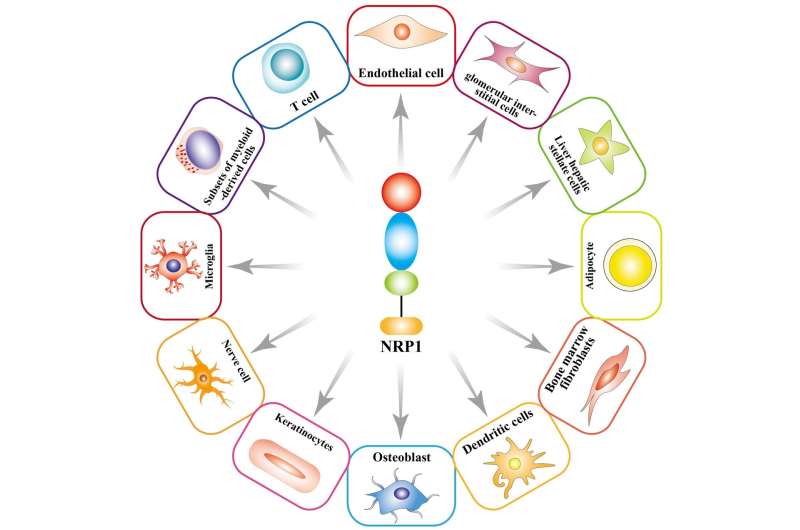Unlocking new avenues for curing cancer: Cell receptor neuropilin-1 could hold the key

Cancer has been the focus much research in the biomedical fields. Today, with research methods advancing rapidly and the base pool of researchers growing constantly, our fundamental understanding of the mechanisms of cancer formation and proliferation have increased, and new more promising treatment avenues have opened up.
In a new review article published in the Chinese Medical Journal, scientists from Guangxi Medical University, China, have organized and analyzed the latest papers published on one promising avenue of exploration for many cancers, the cell receptor neuropilin-1 (NRP-1). Their work provides a much-needed overview of the salient findings in this field that helps direct future research on cancer treatment.
Neuropilins are transmembrane protein receptors with many functions in the body. For instance, they act as part of cell signaling pathways, regulating cellular function when various ligands (proteins) bind to them. NRP-1 in particular is critical to nerve cell and heart and blood vessel development and is otherwise found to be expressed on the surface of many types of cells, including regulatory T cells (a type of immune cell), osteoblasts (bone forming cells), adipocytes (fat storage cells), keratinocytes (a type of skin cell), and bone marrow fibroblasts (connective tissue in the bone marrow).
Because of its role in cell growth and blood vessel formation, this receptor is implicated in cancer development and proliferation. For instance, one action of NRP-1, forming complexes with various growth factors—which are a type of protein or hormone that helps stimulate cells to multiply—appears to promote tumor proliferation and metastasis (movement of the tumor into other parts of the body). In addition, NRP-1 binds to a protein expressed on regulatory T cells, an important player in anti-tumor immunity. This binding interferes with T cell functioning, speeding up tumor progression. Further, it promotes action of tumor-associated macrophages, which suppress the body's normal immune system, helping tumors proliferate. Finally, the importance of NRP-1 in blood vessel formation also applies for blood vessels that tumors use to obtain nutrients for continued growth.
All of these factors combine to make hampering NRP-1 function an attractive idea for treating cancers. Several therapeutic strategies have already been developed, including blocking the interaction of NRP-1 with growth factors to prevent tumor blood-vessel formation, preventing NRP-1 presence in tumor regulatory T cells so that cancers are more susceptible to the body's immune system, and directly targeting NRP-1 expression in several types of cells. Other, more cutting-edge technologies include the development of alternative splicing variants which are basically mutant versions of original proteins that bind to NRP-1; these variants change how NRP-1 acts when they bind to it. Some studies have also looked into combining multiple drugs that target NRP-1, or administering NRP-1-related drugs along with existing chemotherapy drugs. These studies have found that such "combination therapies" work well to eliminate multiple types of cancers.
Lead author of the article, Dr. Shao-Dan Liu, discusses the importance of reviewing recent progress in research on NRP-1 and its relationship to cancers. He says, "A comprehensive review gives us a better sense of where we are at the moment and what still needs to be known. For example, a lot of questions remain to be answered about the exact molecular mechanisms of NRP-1 action in cancer progression."
Nonetheless, recent NRP-1 research has considerably increased our understanding of this receptor's role in tumor development and enhanced our ability to predict the likely outcome of cancers, in addition to diagnosing and treating them. Dr. Liu adds, "We also hope that reading about all these advancements in cancer treatments will give the public confidence that cancer research is on the right track."
More information: Shao-Dan Liu et al, Targeting neuropilin-1 interactions is a promising anti-tumor strategy, Chinese Medical Journal (2020). DOI: 10.1097/CM9.0000000000001200





















